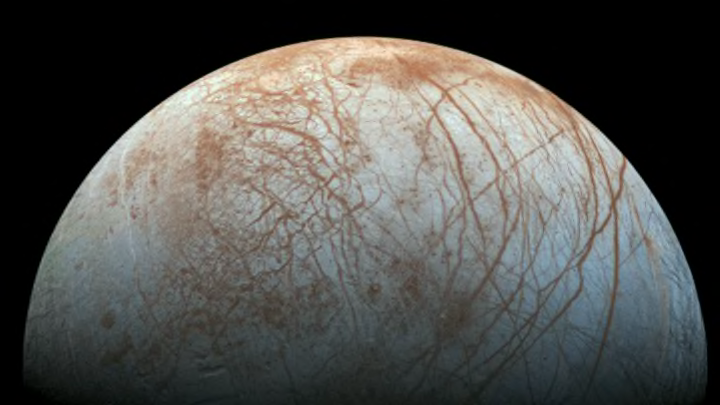Jupiter's Moon Europa May Be Streaked With Sea Salt

Europa, one of Jupiter’s many moons, appears crisscrossed with a dark substance, like caramel drizzled on a scoop of ice cream. Long a mystery to scientists, these streaks may be sea salt from an ocean beneath the planet’s icy surface, a new study finds.
At NASA’s Jet Propulsion Laboratory (JPL) in California, two scientists have built a kind of “Europa in a can,” a miniature simulation of a patch of Europa’s surface that mimics the moon’s temperature, pressure, and radiation exposure. In a new study in Geophysical Research Letters, they lay out evidence from their experiments that Europa’s distinctive discoloration stems from sodium chloride rising from the ocean below, in a process that may provide further evidence of the moon’s habitability.
A laboratory setup at NASA’s Jet Propulsion Laboratory that mimics Europa’s conditions. Image Credit: NASA/JPL-Caltech
JPL’s Kevin Hand and Robert Carlson placed regular salt in a vacuum chamber at Europa’s surface temperature (-280 degrees Fahrenheit) and blasted it with an electron beam to mimic the radiation present on the moon. Ten hours later—the Europa equivalent of a century on Earth—the white salt samples turned yellow-brown, similar to the appearance of the streaks on Europa seen by NASA’s Galileo mission. The longer the samples stayed in the vacuum exposed to the radiation, the darker they became.
There’s no telescope on Earth that can observe Europa accurately enough to prove this hypothesis, but it does bolster the case for sending future spacecraft there to explore. Scientists theorize that Europa could be one of our best chances of finding life in the wide universe beyond Earth’s atmosphere, and research like this can help determine whether the moon has a good shot at being habitable before we send a multi-billion-dollar probe.
[h/t: Gizmodo]